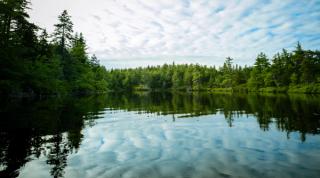
Putting biodiversity at the heart of nature recovery
- Post Date
- 27 July 2023
- Read Time
- 5 minutes

There is an ever-growing impetus for businesses and financial institutions to understand and disclose their dependencies and impacts on nature and biodiversity, as well as the associated financial risks to their business. This builds on the momentum following the adoption of the Global Biodiversity Framework in 2022. After decades of inadequate financial and societal support, the spotlight is finally starting to shine on nature restoration and recovery as businesses look to lessen, mitigate, and offset their nature-damaging activities towards more positive outcomes.
As businesses navigate their way through this new landscape, much as with climate and carbon, attention will inevitably turn towards setting targets to promote nature-positive solutions. For example, the Science Based Targets Network (SBTN) released its first science-based targets for nature in May 2023, with the first set of targets focused on land and freshwater, and including initiatives such as avoiding conversion of natural ecosystems, protecting freshwater quality, and engaging stakeholder groups at the landscape level to restore ecosystems.
Even for businesses that are well on their way along this biodiversity reporting and disclosure journey, the learning curve around nature and biodiversity never really ends. Businesses’ sustainability teams are expected to become more familiar with nature recovery or habitat creation, and there are a few key criteria that are essential to understand when it comes to these approaches.
Designing approaches that deliver multiple wins for large-scale nature recovery is clearly a golden opportunity. However, there are many ways in which businesses may fall short of delivering successful long-term wins for nature: this may easily arise when consideration of climate-related risks and opportunities does not also take into account nature. For example, initiatives purely focused on carbon sequestration may fall short of delivering on a wealth of other benefits that were possible in that area, representing a significant lost opportunity. Perhaps a dense plantation of trees designed to capture carbon may not also be successful in reducing flood risk in the local area, or in restoring soil functionality, or providing recreational benefits, or a home for a diversity of species.
At an early stage, designing nature recovery initiatives and projects that actually work, are resilient to a changing climate, and deliver on multiple aspects of nature including benefits to people, particularly local communities and indigenous groups, may seem like a daunting challenge. There may be a perception that projects should target only one aspect of nature at a time, to achieve short-term wins and deliver on objectives. For example, carbon financing is more established than newer and developing environmental markets (e.g. biodiversity, or marine and coastal initiatives), thus incentivising projects focused on carbon sequestration and mitigation.
Luckily, there is no need to start with a blank canvas in respect of designing nature recovery that is multi-functional. Ecosystems already naturally achieve an equilibrium, fine-tuned through the course of evolution, that supports a variety of life and natural processes. Unfortunately, our disconnection with nature, particularly in western culture, means that we often overlook this innate balance that nature has already perfected.
Whilst this idea is part of the foundation of the “rewilding” concept, it can also be translated across into many other nature recovery projects if biodiversity is considered early-on and as a priority. Biodiversity, i.e. the variety among living organisms, including between species and in ecosystems, is a key part of nature that, from an ecosystem services perspective, is simultaneously a “good” with value economically and culturally; an ecosystem service in itself; and a regulator of many other ecosystem services.
There is a wealth of scientific studies that evidence this concept. Countless long-term studies on grasslands and woodlands show that those with higher biodiversity store more carbon, filter water, provide flood protection, and are home to a wide variety of species with value in their own right. Ecosystems with diminished biodiversity, e.g. due to invasive species, or species extinctions, have been shown to provide reduced ecosystem services and reduced ecosystem functionality. Scenarios and projects that deliver successfully on ecosystem service provision also tend to score highly in biodiversity measurements. Biodiverse ecosystems not only deliver more ecosystem service benefits, but also provide stability in provision and resilience to disturbance and environmental change, particularly important in a changing climate.
On the flip side, numerous failed restoration projects also demonstrate what can happen when biodiversity is ignored. Countless failed mangrove recovery projects, with the sole or primary intentions of flood and storm protection or carbon sequestration, involved planting monocultures of species poorly adapted for the local area, in locations that weren’t suitable. Subsequent low to nil survival rates of trees provided little protection, carbon storage, and had negative consequences for local communities too.
In essence, businesses should have a thorough understanding of biodiversity, and its importance in building healthy, resilient, and functioning ecosystems, when undertaking their nature and climate disclosure processes. Engaging with biodiversity professionals, as well as local communities and local specialists, is key to delivering projects that are successful on several levels. Ensuring biodiversity is considered a priority when designing and engaging with nature recovery work is an effective starting point in the delivery of multiple wins for nature and people.
Recent posts
-

-

-

Navigating the evolving landscape of corporate sustainability and communications in the US
by Chynna Pickens
View post